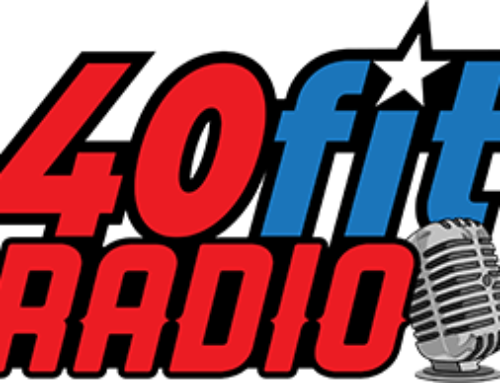Coach D and Trent are back with Part 2 in the Strong Shoulders series discussing common injuries of the shoulder, how they occur, and what tissues are affected. Most active people have met someone — or have experience themselves — with a shoulder injury. They are particularly common in sports where a large degree of shoulder rotation and velocity are involved (think about a Major League Baseball pitcher). In order to understand the best way to rehab and train our shoulders, we have to understand the nature of the injuries.
As mentioned in Part 1, the shoulder, like all joints, is comprised of several types of tissue:
- Bones: the scapula, clavicle, and humerus
- Muscles: the deltoids, trapezius, rhomboids, and rotator cuff muscles (supraspinatus, infraspinatus, subscapularis, teres major and minor)
- Tendons: connecting the muscles to bone
- Ligaments: connecting bone to bone; in the case of the shoulder several ligaments form a sort of “sling” which helps hold the glenohumeral joint together
- Cartilage: on the articular surface of the glenohumeral and AC joints
- Bursa: fluid filled sacs which stack on top of the humeral head and cushion the joints
- As well as the nervous, cardiovascular, lymphatic, and integumentary (skin) components of the shoulder
We commonly hear of strains and sprains. Generally, a strain refers to an injury to a muscle or tendon (elastic structures), while a sprain refers to an injury to a ligament (non-elastic). Both terms refer to tissue that has been damaged due to over-stretching. The level of damage is graded by number: Grade 1 representing a minor strain (perhaps 0-25% of the muscle fibres damaged), Grade 4 representing a complete rupture or tear of the tendon/ligament off the bone. Barring a Grade 4 strain, which will require surgery to repair, training can and should continue to help the tissue heal.
Training increases blood flow and therefore nutrition to the muscle belly, helps removes waste from damaged cells, and promotes release of growth hormones that will promote healing and remodeling of muscle tissue. However, tendon strains will respond better to loading than ligament sprains. Because ligaments are poorly enervated and not very vascular, they should be given additional time to heal and let inflammation subside before loading. Ligaments are not as responsive to training as tendons and muscles, so ligament injuries have longer healing times, up to 6-8 weeks, compared to tendon injuries, which depending on severity may only take 1-2 weeks to heal.
While strains and sprains are acute injuries, tendonitis and it’s insidious siblings tendonosis and tendonopathy is typically chronic in nature, an inflammation of the tendon that presents as painful, stiff, and achy. Tendonitis is probably the most common injury to the shoulder. Tendonosis and tendonopathy are more advanced forms of tendonitis in which the structure of the tendon itself is compromised, and bony changes in the joint may occur from the chronic inflammation.
Another common type of injury is the garbage-bag diagnosis of “impingement syndrome.” Broadly, this refers to damage to the rotator cuff muscles and other soft tissue from getting trapped, or impinged, by the bony parts of the shoulder. In severe cases this bony contact can wear through the muscles and tendons of the rotator cuff, predisposing them to tearing. Some individuals are more prone to impingement than others, depending on how “hooked” their acromion processes are and how much space they have in their shoulder joints.
The last common injury to the shoulder we cover is dislocation,in which the humerus pops out of the joint. Subluxation may also occur, a more minor event in which the joint temporarily pops out of place and back in. Dislocation can be serious if the blood vessels and nerves are damaged, so it’s important to seek a medical professional as soon as possible to properly reset the joint. Like ligament injuries, dislocations require time to heal and scar down before restarting training. Loading a dislocated shoulder too soon could create laxity in the joint, which will predispose it to more dislocations in the future.
Next week Coach D will be back to discuss common rehab methods for shoulder injuries, and basic training concepts for keeping your shoulders strong and healthy.
Connect with 40fit Radio

Leave A Comment